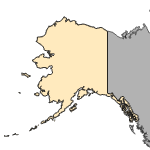Faxonius sanbornii
(Sanborn crayfish)
Crustaceans-Crayfish
Native Transplant |
|
Common name: Sanborn crayfish
Synonyms and Other Names: Orconectes sanbornii (Faxon, 1884). Faxonius sanbornii underwent a reclassification in August 2017, changing the genus of non-cave dwelling Orconectes to Faxonius (Crandall and De Grave 2017).
Taxonomy: available through
www.itis.gov
Identification: The Sanborn's crayfish has a light brown base color that covers the dorsal surface of its carapace, abdomen, and chelae (claws). The chelae are tipped with orange and bordered by narrow black bands, and there is a prominent orange knob at the base of each dactyl (finger). It has a brown 'U-shaped' saddle that spans forward from the caudal margin of the carapace to the mid-point on its lateral surfaces. The prominence of this saddle varies among individuals and may appear faint. This species has a distinct brown patch just posterior to the cervical groove, on its dorsal surface, that is laterally elongated. Posterior to this dark patch is a brown wedge that spans the center of the abdomens dorsal surface. The wedge is darkest and widest near the carapace, and fades as it approaches the telson. The ventral surface of the Sanborn Crayfish is cream to white in coloration (Taylor and Schuster 2004). The rostrum of Orconectes sanbornii is moderately excavated and lacks a median carina (Fitzpatrick 1967; Taylor and Schuster 2004; Loughman 2011). The chelae are robust with moderately long fingers. Two well developed rows of tubercles, totaling 7-11 in each, are present on the mesial surface of the chelae palm (Loughman 2011). Chelae appear to be larger in males than females of similar carapace length. Gonopods of form I males terminate in two short elements, with the first being a sharply pointed corneous central projection and caudodistally recurved tip. The second is a noncorneous mesial process that is dorsoventrally flattened and slightly shorter or of equal length (Taylor and Schuster 2004; Loughman 2011). A comprehensive diagnosis with illustrations of morphological features for further identification is given by Fitzpatrick (1967); Taylor and Schuster (2004), and Loughman (2011).
The Sanborn Crayfish is similar in appearance the Livingston Crayfish (O. margorectus) and Western Highlands Crayfish (O. tricuspis). Each species has a mesial process that is dorsoventrally flattened and a central projection that is less than 25% of the total length of the gonopod. Orconectes sanbornii is distinguished from O. tricuspis by the presence of a mesial process that is not recurved cephalodistally and by lacking a median carina. It is distinguished from O. margorectus through the presence of a dentate incisor region on the mandible (Taylor and Schuster 2004).
Size: Sanborn Crayfish reach an average size of 24 millimeters in total carapace length (TCL) (Loughman 2011). The maximum size reported for the species is 85.0 mm in total length (TL) (Taylor and Schuster 2004).
Native Range: The Sanborn Crayfish is native to the middle Ohio River drainage in Ohio, Kentucky, and West Virginia (Taylor and Schuster 2004; Loughman 2011). In Ohio, Orconectes sanbornii is found throughout the Muskingum basin, portions of the Scioto, and Lake Erie tributaries from Sandusky Bay to the Cuyahoga River (Thoma and Jezerinac 2000). Its range in Kentucky is limited to the extreme northeastern portion of the state where it commonly occurs in the Tygarts and Grassy Fork drainage, and the Ohio River in Carter, Lewis, and Greenup Counties (Taylor and Schuster 2004). The Sanborn Crayfish inhabits the Middle Ohio North, Middle Ohio South, and Lower Ohio basins in West Virginia (Loughman 2010; Loughman 2011).



|

Alaska |

Hawaii |

Puerto Rico &
Virgin Islands |

Guam Saipan |
Hydrologic Unit Codes (HUCs) Explained
Interactive maps: Point Distribution Maps
Nonindigenous Occurrences:
Table 1. States with nonindigenous occurrences, the earliest and latest observations in each state, and the tally and names of HUCs with observations†. Names and dates are hyperlinked to their relevant specimen records. The list of references for all nonindigenous occurrences of Faxonius sanbornii are found here.
Table last updated 11/23/2024
† Populations may not be currently present.
Ecology: The Sanborn Crayfish is considered a tertiary burrower, and its habitat requirements mirror that of the Allegheny crayfish (O. obscurus) (Loughman 2011). Orconectes sanbornii inhabit streams with substrates of fine gravel and cobble. It is commonly found in cobbled areas with moderate to no-flow, but has been collected from areas with slab boulders, woody debris, leaf packs, and depositional sediments (Taylor and Schuster 2004; Loughman 2011). Loughman (2011) described O. sanbornii as being gregarious in nature and noted that it was often found exposed in stream channels using interstitial spaces between cobble for cover. Reproductively active form I males have been collected between the months of April and October. Copulation in this species occurs in the summer months of July and August, and females lay their eggs the following spring in April and May (Fielder 1972). Females with young have been observed during the months of April, June, and September. The presence of young being carried by females in September suggests that egg laying may occur twice in a single year or that it may occur later in some individuals. More data is needed to confirm whether the species spawns multiple times per season. (Fielder 1972; Jezerinac et al. 1994; Taylor and Schuster 2004).
Means of Introduction: The means of introduction for the Sanborn Crayfish into northwest Washington is unknown (Larson and Olden 2011).
Impact of Introduction: The impacts of this species are currently unknown, as no studies have been done to determine how it has affected ecosystems in the invaded range. The absence of data does not equate to lack of effects. It does, however, mean that research is required to evaluate effects before conclusions can be made.
References: (click for full references)
Fielder, D.D. 1972. Some aspects of the life histories of three closely related crayfish species,
Orconectes obscurus,
O. sanborni, and
O. propinquus. The Ohio Journal of Science 72(3):129-145.
http://hdl.handle.net/1811/5691 Fitzpatrick, J.F., Jr. 1967. The Propinquus group of the crawfish genus Orconectes (Decapoda: Astacidae). The Ohio Journal of Science 67(3):129-172. http://hdl.handle.net/1811/5295
Jezerinac, R.F., G.W. Stocker, and D.C. Tarter. 1994. The Crayfishes (Decapoda: Cambaridae) of West Virginia. Ohio Biological Survey, College of Biological Sciences, The Ohio State University, Columbus, OH.
Larson, E.R., and J.D. Olden. 2008. Do schools and golf courses represent emerging pathways for crayfish invasions? Aquatic Invasions 3(4):477-480.
Larson, E.R., and J.D. Olden. 2011. The state of crayfish in the Pacific Northwest. Fisheries, 36(2): 60-73.
Larson, E.R., C.A. Busack, J.D. Anderson, and J.D. Olden. 2010. Widespread distribution of the non-native Northern Crayfish (Orconectes virilis) in the Columbia River Basin. Northwest Science 84(1):108-111.
Larson, E.R., and J.D. Olden. 2013. Crayfish occupancy and abundance in lakes of the Pacific Northwest, USA. Freshwater Science 32(1):94-107.
Loughman, Z.J., and S.A. Welsh. 2010. Distribution and conservation standing of West Virginia crayfishes. Southeastern Naturalist 9(3):63-78. https://www.researchgate.net/publication/232689227
Loughman, Z.J. 2011. Ecology, systematics, and conservation of West Virginia's crayfishes. Indiana State University. (Doctoral dissertation).
Taylor, C.A. and G.A. Schuster. 2004. The crayfishes of Kentucky. Illinois Natural History Survey.
Thoma, R.F. and R.F. Jezerinac. 2000. Ohio crayfish and shrimp atlas. College of Biological Sciences, Ohio State University.
Author:
Procopio, J.
Revision Date: 2/8/2022
Citation Information:
Procopio, J., 2024, Faxonius sanbornii (Faxon, 1884): U.S. Geological Survey, Nonindigenous Aquatic Species Database, Gainesville, FL, https://nas.er.usgs.gov/queries/FactSheet.aspx?SpeciesID=2811, Revision Date: 2/8/2022, Access Date: 11/23/2024
This information is preliminary or provisional and is subject to revision. It is being provided to meet the need for timely best science. The information has not received final approval by the U.S. Geological Survey (USGS) and is provided on the condition that neither the USGS nor the U.S. Government shall be held liable for any damages resulting from the authorized or unauthorized use of the information.